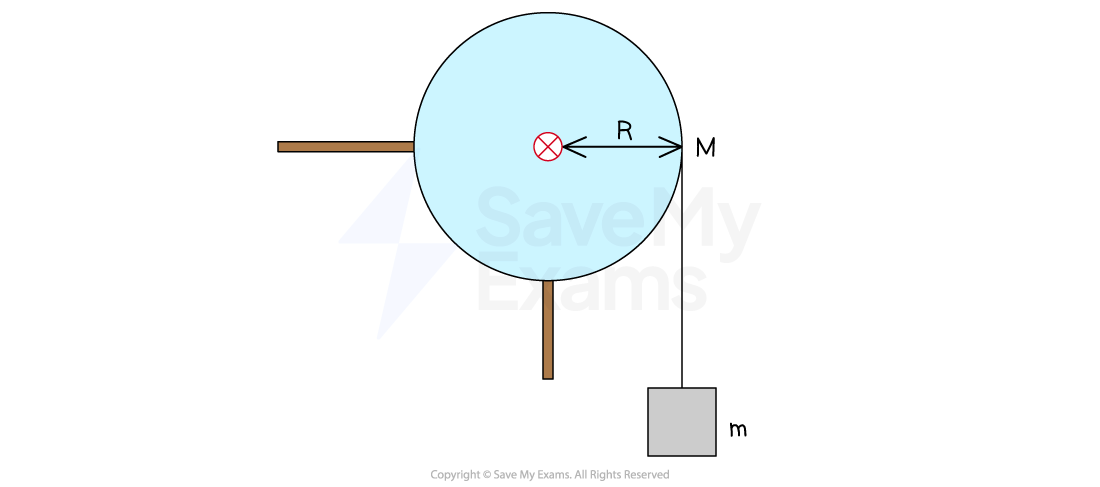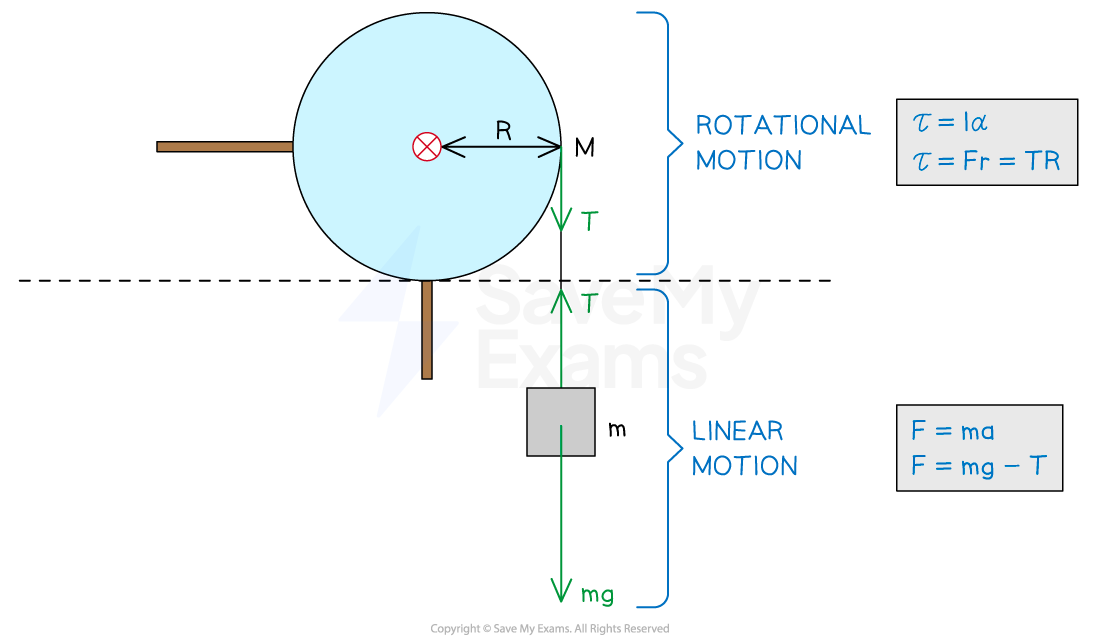Newton’s Second Law in Rotational Form (College Board AP® Physics 1: Algebra-Based): Study Guide
Newton’s second law in rotational form
The rotational analog of Newton's second law states:
The rate of change of angular velocity, or angular acceleration, of a rigid system is directly proportional to the net torque exerted on the rigid system and is in the same direction
It is defined by the equation:
Where:
= angular acceleration of the system, measured in
= net torque exerted on the system, measured in
= rotational inertia of the system, measured in
Newton's second law states that angular acceleration is:
directly proportional to the net torque exerted on the rigid system
inversely proportional to the rotational inertia of the rigid system
Therefore, the angular velocity of a rigid system will
change if the net torque exerted on that system is not equal to zero
remains constant if the net torque exerted on that system is equal to zero
Solving problems involving linear and rotational motion
A rigid system may have multiple forces and torques acting on it, for example
a beam suspended by a rope
pulley-mass systems
Torques and linear forces act independently
Therefore, to fully describe such a system, calculations involving linear and rotational quantities may need to be performed independently
These types of questions usually involve the following concepts and equations
Net force is zero for systems in translational equilibrium:
Net torque is zero for systems in rotational equilibrium:
Unbalanced forces produce linear acceleration:
Unbalanced torques produce angular acceleration:
The relationship between tangential and angular velocity:
The relationship between tangential and angular acceleration:
Comparison of linear and rotational variables in Newton's second law
linear variable | rotational variable |
|---|---|
force | torque |
mass | rotational inertia |
acceleration | angular acceleration |
Newton's second law | Newton's second law |
Worked Example
A block of mass is attached to a string that is wrapped around a cylindrical pulley of mass
and radius
, as shown in the diagram.
The rotational inertia of the cylindrical pulley about its axis is

When the block is released, the pulley begins to turn as the block falls.
Derive an expression for the acceleration of the block in terms of ,
and
.
Answer:
Step 1: Analyze the scenario
There is linear motion due to the forces exerted on the block from:
the weight of the block
the tension in the string
There is rotational motion due to the torque exerted on the pulley from the tension in the string at the radius

Step 2: Apply Newton's second law to the motion of the block
A net force produces a linear acceleration
eq. (1)
Step 3: Apply Newton's second law to the rotation of the pulley
A net torque produces angular acceleration
For radius
Step 4: Write the expression in terms of linear acceleration
The relationship between angular acceleration and tangential acceleration of the pulley is:
Substitute this into the previous equation:
Step 5: Substitute the rotational inertia into the expression
The rotational inertia of the cylinder is
eq. (2)
Step 6: Write the final expression for linear acceleration
Substitute eq. (2) into eq. (1)

Unlock more, it's free!
Did this page help you?